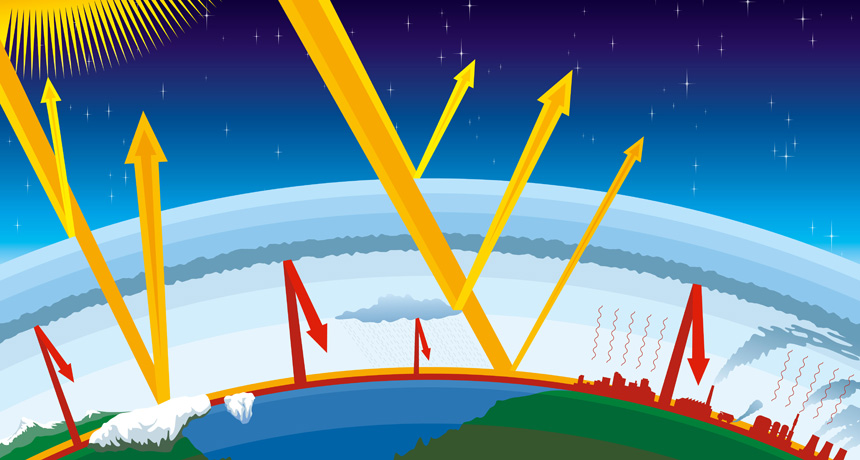(For more about Power Words, click here)
carbon dioxide A colorless, odorless gas produced by all animals when the oxygen they inhale reacts with the carbon-rich foods that they’ve eaten. Carbon dioxide also is released when organic matter (including fossil fuels like oil or gas) is burned. Carbon dioxide acts as a greenhouse gas, trapping heat in Earth’s atmosphere. Plants convert carbon dioxide into oxygen during photosynthesis, the process they use to make their own food.
climate The weather conditions prevailing in an area in general or over a long period.
computer model A program that runs on a computer that creates a model, or simulation, of a real-world feature, phenomenon or event.
fossil fuels Any fuel — such as coal, petroleum (crude oil) or natural gas — that has developed in the Earth over millions of years from the decayed remains of bacteria, plant or animals.
global warming The gradual increase in the overall temperature of Earth’s atmosphere due to the greenhouse effect. This effect is caused by increased levels of carbon dioxide, chlorofluorocarbons and other gases in the air, many of them released by human activity.
greenhouse A light-filled structure, often with windows serving as walls and ceiling materials, in which plants are grown. It provides a controlled environment in which set amounts of water, humidity and nutrients can be applied — and pests can be prevented entry.
greenhouse gas A gas that contributes to the greenhouse effect by absorbing heat. Carbon dioxide is one example of a greenhouse gas.
infrared light A type of electromagnetic radiation invisible to the human eye. The name incorporates a Latin term and means “below red.” Infrared light has wavelengths longer than those visible to humans. Other invisible wavelengths include X rays, radio waves and microwaves. It tends to record a heat signature of an object or environment.
parts per million (billion or trillion) Frequently abbreviated as ppm (or ppb or ppt), it is a measure of the number of units of some material that it mixed into another. The units should be the same (or equivalent) for both materials. The term is used to describing extremely small concentrations of one chemical dissolved in another. For example, a solution of 300 parts per billion of sodium in water would mean that there are 300 sodium atoms for every billion water molecules.
radiation (in physics) One of the three major ways that energy is transferred. (The other two are conduction and convection.) In radiation, electromagnetic waves carry energy from one place to another. Unlike conduction and convection, which need material to help transfer the energy, radiation can transfer energy across empty space.
solar Having to do with the sun, including the light and energy it gives off.
watt A measure of the rate of energy use, flux (or flow) or production. It is equivalent to one joule per second. It describes the rate of energy converted from one form to another (or moved) per unit of time. For instance, a kilowatt is 1,000 watts; household energy use is typically measured and quantified in terms of kilowatt-hours, or the number of watts used per hour.
wavelength The distance between one peak and the next in a series of waves, or the distance between one trough and the next. Visible light — which, like all electromagnetic radiation, travels in waves — includes wavelengths between about 380 nanometers (violet) and about 740 nanometers (red). Radiation with wavelengths shorter than visible light includes gamma rays, X-rays and ultraviolet light. Longer-wavelength radiation includes infrared light, microwaves and radio waves.








